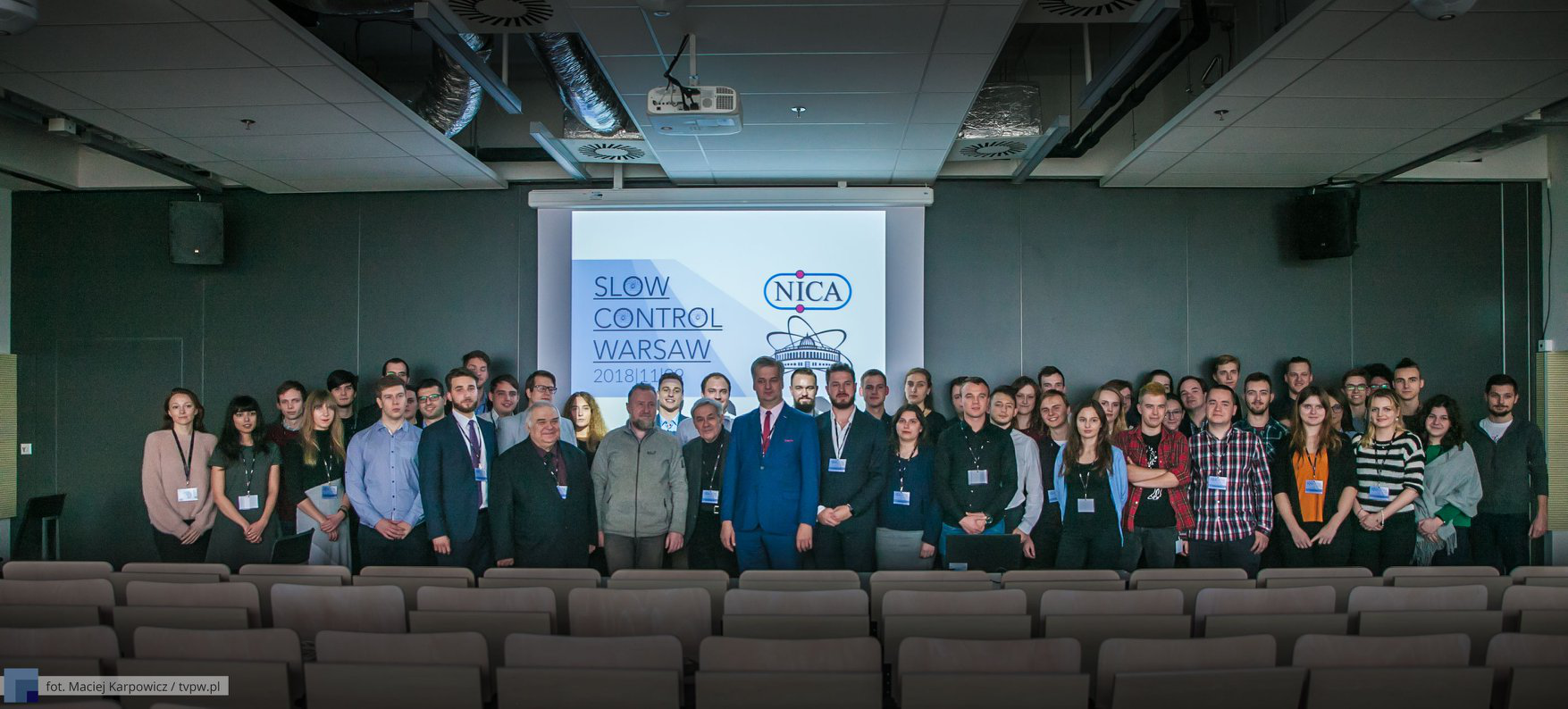Speaker
Description
Reporting the topic of student internship (summer 2018)
Programs:
Master Thesis, Bachelor Thesis, Engineering Work, Summer Students, Slow Control System, TeFeNica.
Project: NICA-MPD (Nuclotron-based Ion Collider fAcility-Multi-Purpose Detector)
Cluster Name: Robots in great physical experiments.
Senior Leader: prof. dr hab. Jan Pluta, pluta@if.pw.edu.pl
Leader: prof. dr hab. inż. Adam Kisiel, kisiel@if.pw.edu.pl
Supervisor: mgr inż. Marek Peryt, Marek.Peryt@pw.edu.pl
Topic:
Rover Vehicle Measuring Robots for Great Physical Experiments
Engineering and technical tasks:
Overview
The Rover Vehicle; Measuring Robots for Great Physical Experiments, is an Project, versatile and fun starting point for a variety of mechatronics and robotics design Projects. It is a ground vehicle controlled by NImyRIO and equipped with motors and sensors. You can start by following instructions to build the Rover Vehicle Measuring Robot and run the provides code. This will allow you to tele operate the rover to travel and grasp objects with its pincer end effector. You can expand the Rover‘s functionality so that it can utilize controls algorithms and complete tasks.
Base Functionality:
• The two front wheels are driven independently of one another by DC motors. The back wheel is used for balance and can rotate freely.
• The DC motor speed are controlled using PWM, and their directions are controlled using a digital line (this wiring is done for you via the motor board).
• The Rover has differential steering, meaning that the direction of the Rover can be changed by varying the relative rotational velocity of DC motors.
• The IR infrared range finder data is read through an analogue line and converted to centimetres. It can be used to detect distance from other objects or distinguish colour / material differences based on IR reflectivity.
• The pincer end reflector is controlled by a servo motor. The position of the servo motors is controlled by PWM.
• A VI will be deployed NImyRIO, enabling it to output motor signals, input sensor data, and transfer data to and from a host computer via Wi-Fi.
• A VI will run of a host computer for teleoperation. Here the User can input movement commands, open and close the pincers, and view the IR sensors data.
Expansion and Teaching Options:
• Implement open-loop and closed-loop control algorithms in LabView to precisely control the Rover’s positions and velocity.
• Use the IR sensor to detect objects. You can write LabView code to avoid the objects or grasp them with the pincers.
• Use the IR sensor detect a line, and write LabView code to follow it.
• Program the Rover to operate autonomously, so that it doesn’t require user from the host.
• Add additional features the Rover.
• Example ideas: USB camera ultrasonic sensor custom 3-D printed parts.
Job description:
The work is an important part of the NICA-MPD Project, carried out in the international research and development centre JINR Joint Institute for Nuclear Research in Dubna (Russia), Poland has been a member since 1956 and has a significant contribution to its scientific and research achievements.
The work consists in discerning and formulating the needs of a group of specialists from Polish scientific and research institutions, SCS Slow Control System, MPD detector control system and NICA complex. The proposed engineering and technical task combines most of the characteristics of engineering and research work.
Range of tasks to be carried out by the Apprentice:
The Self-Balancing Measuring Robot for Great Physical Experiments, relates to controls concepts like relative stability robust stability and fundament takes consisting of prefabricated components and electronic modules, should be designed and developed and programmed in NI LabView. The subject is required to understand the theoretical knowledge and to analyse the topic at the theoretical and practical level. A working prototype (model) is planned. Then, technical analysis of the system and its functionality will be performed. Applications should be used when formulating subsequent technical and functional requirements, the robot's real measuring system. Define the required algorithms and write the software. The apprentice will perform tests and study the work of the finished robot. As a result of the subject matter, a working robot system should be created. At the end, you should give a 15-minute lecture in English about the work done. After the internships (in November 2018) a conference in Warsaw is planned: Slow Control System 2018, in which the Apprentice should take an active part by giving a thematic lecture. The publication of this work is planned.
Note:
It is possible to continue cooperation, for example in the form of an engineering or a master's thesis, as well as further scientific contacts.
Bibliography:
www.jinr.ru
www.ni.com
www.nica.if.pw.edu.pl
The MultiPurpose Detector – MPD to Study Heavy Ion Collisions at NICA; (CDR Conceptual Design Report) Version 1.4; Project leaders: A. N. Sissakian, A. S. Sorin, V. D. Kekelidze.
| Temat: | OK |
|---|
